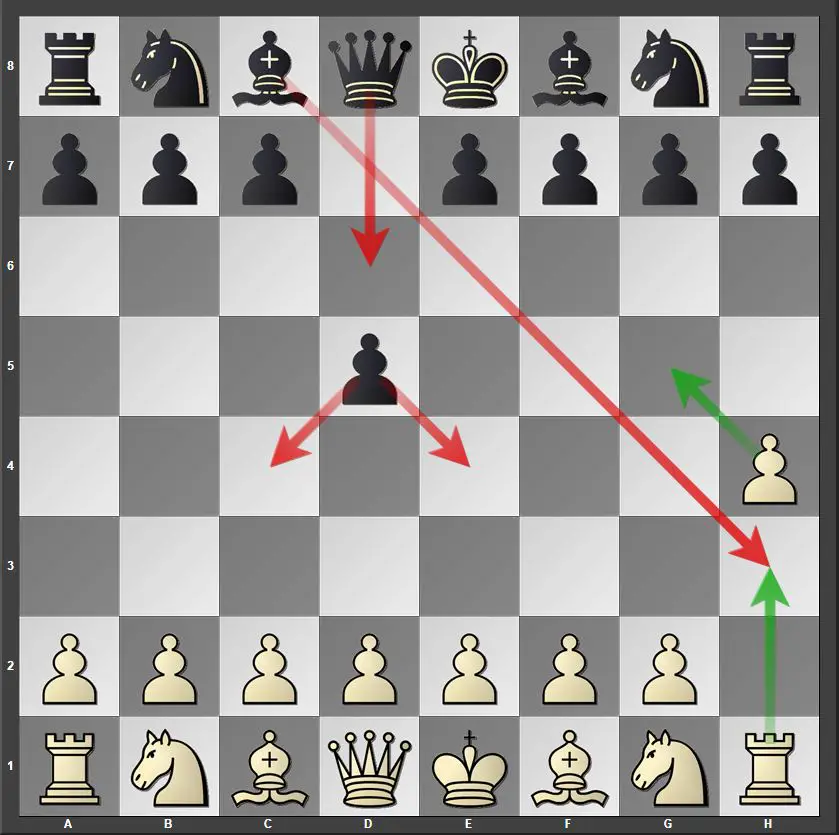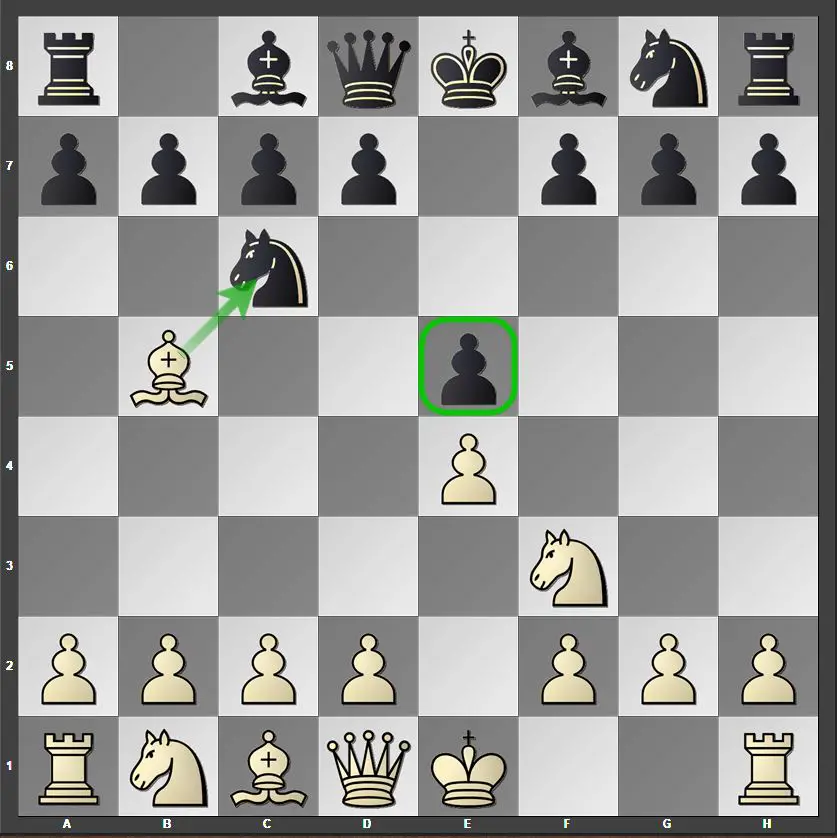Having learned chess rules and notation, now you are ready to sit at the chessboard. But then you realize that you have no clue about how to begin the game, or what you are supposed to look for in the very first moves of the game of chess.
Here are the major opening Principles in chess
- Center control
- Fast development of pieces
- Don’t bring out the queen too early.
- Focus on the king safety
The first phase of the game is called the opening. As the game evolved through the centuries, there are many established theories and principles to play chess openings. In this post, we cover various basic things to keep in mind while playing chess openings.
Most coaches want their students to memorize the entire opening theories! That is not a proper way to learn chess. First, it is important to understand why the moves are being played.
What exactly is a chess opening?
A chess opening is the beginning stage of a chess game. There are various openings in a chess game. Ruy Lopez, Queen’s Gambit, English Opening are some of the popular chess openings for white. Sicilian Defence, King’s Indian Defence, French Defence are some of the popular chess openings for black.
There are 20 possible first moves for white in a chess game and 20 possible moves for black as well. After the first pair of moves is completed by both players, there are around 400 chess combinations available for the second move for white.(Source )
)
Look at a chess opening as a preparation for battle. How do you prepare for war? We will go through various important principles of chess openings which apply to almost every opening in chess.
Center
You want to control the maximum squares on the chessboard, where do you begin? Of course, you must begin from the center. If you have a strong center in command, you can freely move your pieces around it. Compare the two positions below


- If you play 1.h4, you are aimlessly wandering at the border busy viewing sunset, wasting your moves while giving your opponent a chance to take the center himself.
- On the other hand if you play 1.e4 or 1.d4 or even 1.c4, you are taking your first steps towards the center, saying ‘here, I am ready, let’s fight.’
The four central squares (e4, d4, e5, d5) are the key of the chessboard. Even if you don’t know any opening theory, your aim should be to first move your pieces towards controlling most of these 4 squares.
Exercise: List down what other 1st moves you can make (from both sides) which help control the four crucial central squares?
Also notice that the central pawn moves e4, or d4 open up the diagonals for queen and bishops, which takes us to the next principle of chess opening.
Fast development of pieces
Bring out your forces as fast as you can is the next step for the preparation of battle. It goes without saying that the pieces must be developed towards the center.


Check the diagram above(left) which gives an idea of the development that white pieces can make. Both sides have made 4 moves each, but note the difference between the positions of the two armies.
- White has already developed two minor pieces, his pawns dominate the center and he is ready to castle next move.
- Black has aimlessly moved pawns which contribute very little in either development of his pieces or in taking the center.
In such positions, a strong player will grab the initiative and attack and hold it on for the entire game.
For the openings, sometimes it is important to develop pieces even at the cost of a pawn. Fast development of pieces gives initiative, which gives compensation for the sacrificed material. Check out the above diagram (right), white has just played pawn to c3, sacrificing a pawn for fast development. If black captures on c3, white will capture with the knight, automatically developing it to the best square. Also, the absence of d pawn frees up the white’s bishop and queen for setting up an attack. In such positions, if black is not careful and safeguards his king quickly, he can easily end up in trouble.
Thus after developing centre pawns, the minor pieces (knights and bishops) should be developed. There is also a rule that ‘One piece shouldn’t be moved twice in the opening’. It is because it would waste valuable time; however, it is not a thumb rule. Suppose your opponent blundered a pawn in the opening which you can grab by moving the same piece twice, then you can go for it, checking that it is not a trap.
Don’t bring out the queen too early.
The queen is a very powerful piece, and if brought out too early in the opening it can be threatened with minor pieces. Obviously, you don’t want to give up your queen for the opponent’s single minor piece. Remember that a queen is worth 3 minor pieces.
So if you bring out the queen too early and if it gets attacked by a knight, bishop or even a pawn, you will have to waste valuable time in retreating it.

Check out the diagram above. Black played Nc6, attacking the queen and at the same time developing his piece to the best square. White will have to waste a move retreating the queen or placing it somewhere else, which will give black a lead in development.
Focus on the king safety
In our previous post, we saw a special move ‘castling’. Think about why would someone have invented this move? It is because the kings need to be safe before an army begins an attack on the opponent. A centre is usually an unsafe place for the king. Also, when the king is in the center, your kingside and queenside forces can’t coordinate properly. Therefore one should aim to castle as soon as possible so that the king becomes safe and the army including the far end rooks can be properly coordinated.
Check out the diagram below (left), notice the difference it makes once the king is on the side of the board and the rooks are connected.


There are various examples in history where the games were really short because a player ignored the safety of the king and the fast development of pieces.
Check out the position above (right). Black gave a needless check on b4 square, white played c3 and the bishop had to move to a5. Now because of this waste of time, white was able to castle and give a check to the black king, to stop him from castling and put him in an uncomfortable situation. Had black simply played Be7 instead of Bb4+, he would castle on this move and would be fine.
This was an example of how even one move can change the situation drastically.
Some common opening positions and their ideas
With the above principles in mind, you can begin to play good chess openings even without memorizing theories. However, let’s look at how different positions look like after a few moves in the opening.


Diagram on the left opened with e4-e5. White is fighting for the e5 square by attacking e5 with Nf3 and trying to remove the defender (knight on c6) with Bb5. This opening is called Ruy Lopez.
Diagram on the right opened with d4-d5. Notice how much difference is there between the two positions even after two different pawn moves. The whole development scheme will be different and therefore the plans of the position will be different.
For example,
- after e4-e5, there is a point in playing Nf3, where white attacks the undefended e5 pawn.
- But after d4-d5, there is no point in playing Nc3, because the pawn is already defended by the queen. So here white has to either play c4, attack the d5 pawn with his pawn or play moves like e3, Nf3 which lead to slow, positional type of games.
Here are a few more different ways of opening a chess game.


Diagrams on left and right are called “French defense” and “Caro-Kann” defense. Black strengthens his center with pawn before developing his pieces.


Diagram on the left is Sicilian defense, very unique way of fighting for the center. Diagram on the right is king’s Indian defense, where black focuses on castling before taking the center with his pawns.
Conclusion
Thus we have covered the basic principles of the openings and you are ready to open a game of chess with a basic understanding of what you are aiming at. If you are a beginner, my suggestion is that don’t go too deep into opening theories. Just learn the basics and as you play, you will realize the secrets of the openings slowly.
Also Read :
